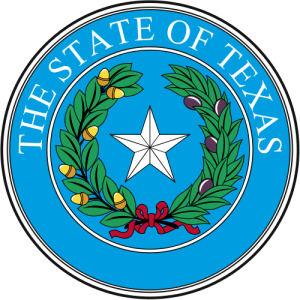 Texas Population 2013
Texas Population 2013
Based on estimates and the studies by the United States Census Bureau, the population of Texas in 2013 is estimated to be 26,059,203, which is the 2nd largest population in the United States. This growth displayed a 3.6% increase from the last census taken in 2010. Based on the population and based on the area of the state, the population density of the state is about 98.1 people per square mile, ranked the 26th largest population density in the United States.
Texas Population Projections
Based on the historical and current trends of the state, the population is expected to reach about 26.296 million people by the year 2015. This population would be a 0.91% increase from the current population of Texas. Then, by the year 2020, the population is expected to continue that trend. It is expected to reach 27.374 million people. This would be a 5% increase from the current population. Continuing a fairly steady increase, the population is expected to reach 28.376 million people by the year 2025, recording a population increase of 8.9% from the current population. Then, by the year 2030, the total population is estimated to be about 29.29 million people, which is a 12.4% increase from the current population. The population is expected to top 30 million people by the year 2035 to an estimated population of 30.1 million people, which is a 15.5% increase from the current population. From there, the population is expected to be approximately 30.823 million people by the year 2040. This would be an increase of about 18.3%. Then, in 2045, the population is estimated to reach 31.462 million people, a 20.7% increase from the current population in the state of Texas. Lastly, by the halfway point in the century, the population of Texas is projected to reach 32.052 million people, a 23% increase from the current population.
Texas Land Mass
Texas measures from its most distant points to be about 790 miles long and 660 miles wide. The state also has an approximate area of 268,601 square miles, making it the 2nd largest state in the country. Texas occupies about 6,687 square miles of water, which makes it the 9th wettest state. Compared to this water area, Texas takes up 261,914 square miles of land. Guadalupe Peak has the highest elevation point in the entire state of Texas. It reaches an approximate 8,749 feet above sea level. The lowest point in the state is at the Gulf of Mexico, which reaches sea level. The geographic center of Texas is located in McCulloch County, 15 miles northeast of Brady. Four states, one body of water, and one international country border the state of Texas: New Mexico, Oklahoma, Arkansas, Louisiana, the Gulf of Mexico, and Mexico.
Texas is made up of four distinct geographic land areas: the Gulf Coast Plain, the Interior Lowlands, the Basin and Range Province, and the Great Plains. The Gulf Coast Plain is in the southern part of Texas, where it meets with the Gulf of Mexico. This area has rolling and hilly areas, along with heavy areas of pinewood and hardwood trees. However, the further west areas of this portion become more like prairies and brushlands. The Interior Lowlands are to the northwest of the Gulf Coast Plain, but in the northeast area of the state. This area is good for raising cattle and growing many crops. The western portion sees very little rainfall every year, ranging from 20 to 30 inches per year. The Basin and Range Province is in the furthest west portion of the state. This is the only part of the state that is considered mountainous at all. It is also filled with large drainage basins. Lastly, the Great Plains lies to the east of the point where the Rocky Mountains begin up into northwestern Texas.
Texas Demographics
Approximately 50.3% of the state’s 26.059 million people are female, while the other 49.7% of the population is male. Also, those that identify as white (including Hispanic or Latino) make up the largest percentage of the demographics in the state of Texas. Approximately 81% of the state identify as this race. But, out of that 81%, about 38% do identify as Hispanic or Latino and the other 45% as Caucasian. Those that identify as Black or African American make up 12% of the entire population of the state of Texas. The rest of the population is made up of those that identify as Asian, American Indian, Alaskan Native, Native Hawaiian, other Pacific Islanders, or those that identify as two or more races. These other races make up about 7% of the Texas population. However, 4% out of that 7% is Asian.
Texas Religion
The population of Texas has a slightly more religious population than the average state. About 56% of the state population identifies as religious, compared to the national average of 49%. Out of the 56%, about 19% identify as members of the Catholic Church, making it the largest denomination in the state of Texas. The next largest denomination in the state of Texas is Baptist, making up 18% of the population. All the other Christian denominations make up about 16.5% of the population. Those that identify with the Jewish, Eastern, or Islamic faiths make up about 2.5% of the state. However, 1.7% out of that 2.5% identifies as Islamic, which is twice the national average of Islamic population.
Visit Texas
 Texas Sports
Texas Sports
The state of Texas has teams represented in all of the major professional sports: baseball, basketball, hockey, football, and soccer. There are two teams in Major League Baseball, based out of Arlington and Houston: Texas Rangers and Houston Astros. The state also has three basketball teams in the National Basketball Association: the Houston Rockets, San Antonio Spurs, and the Dallas Mavericks. The state only has one hockey team in the National Hockey League, which is the Dallas Stars. Also, the state has two football teams in the National Football League: Dallas Cowboys and the Houston Texans. Lastly, the team has two soccer teams in the Major League Soccer: Houston Dynamo and FC Dallas.
Other Resources
Use this link to learn more about Texas’s population and demographic statistics.


